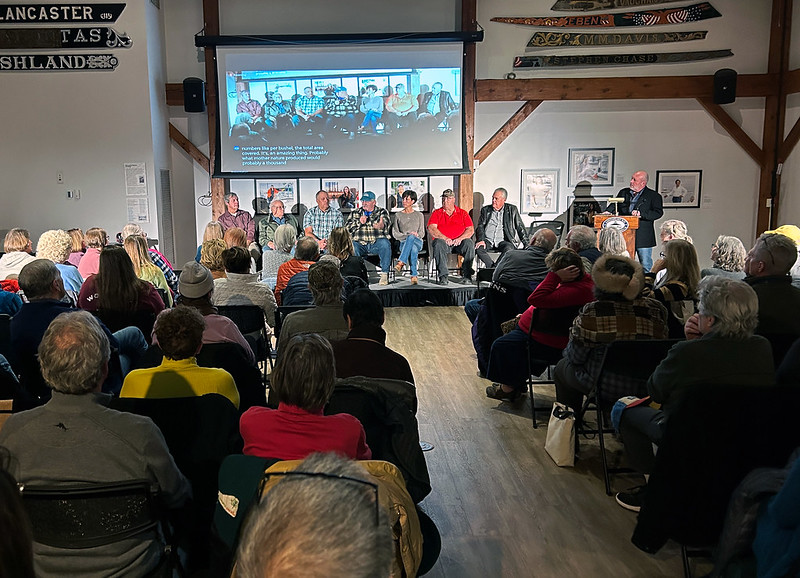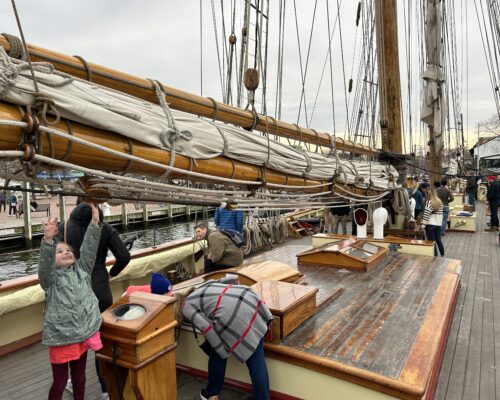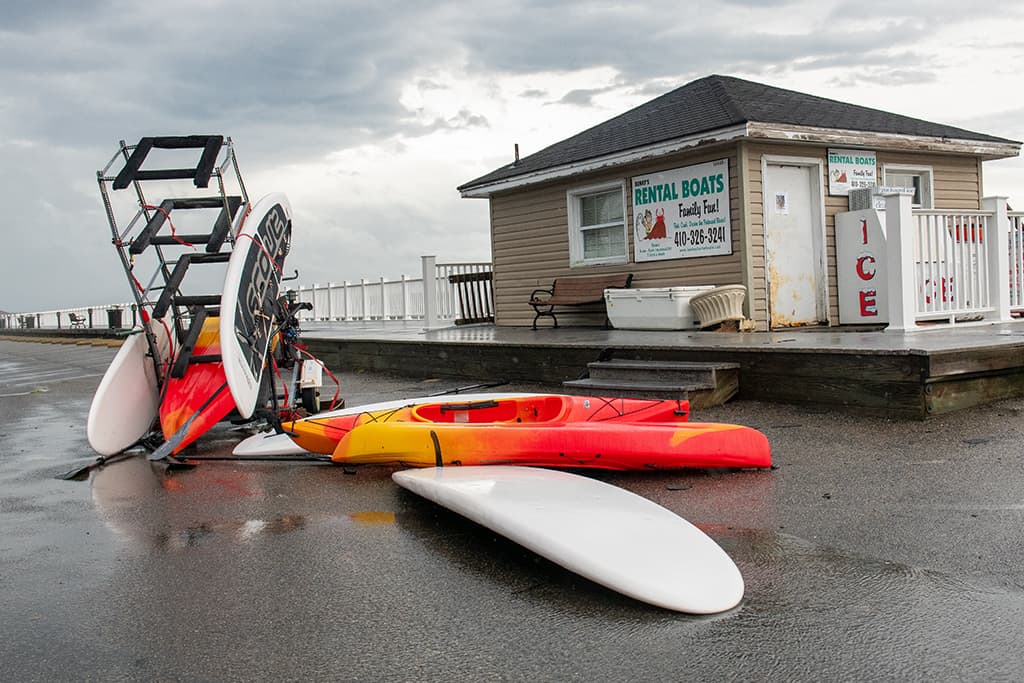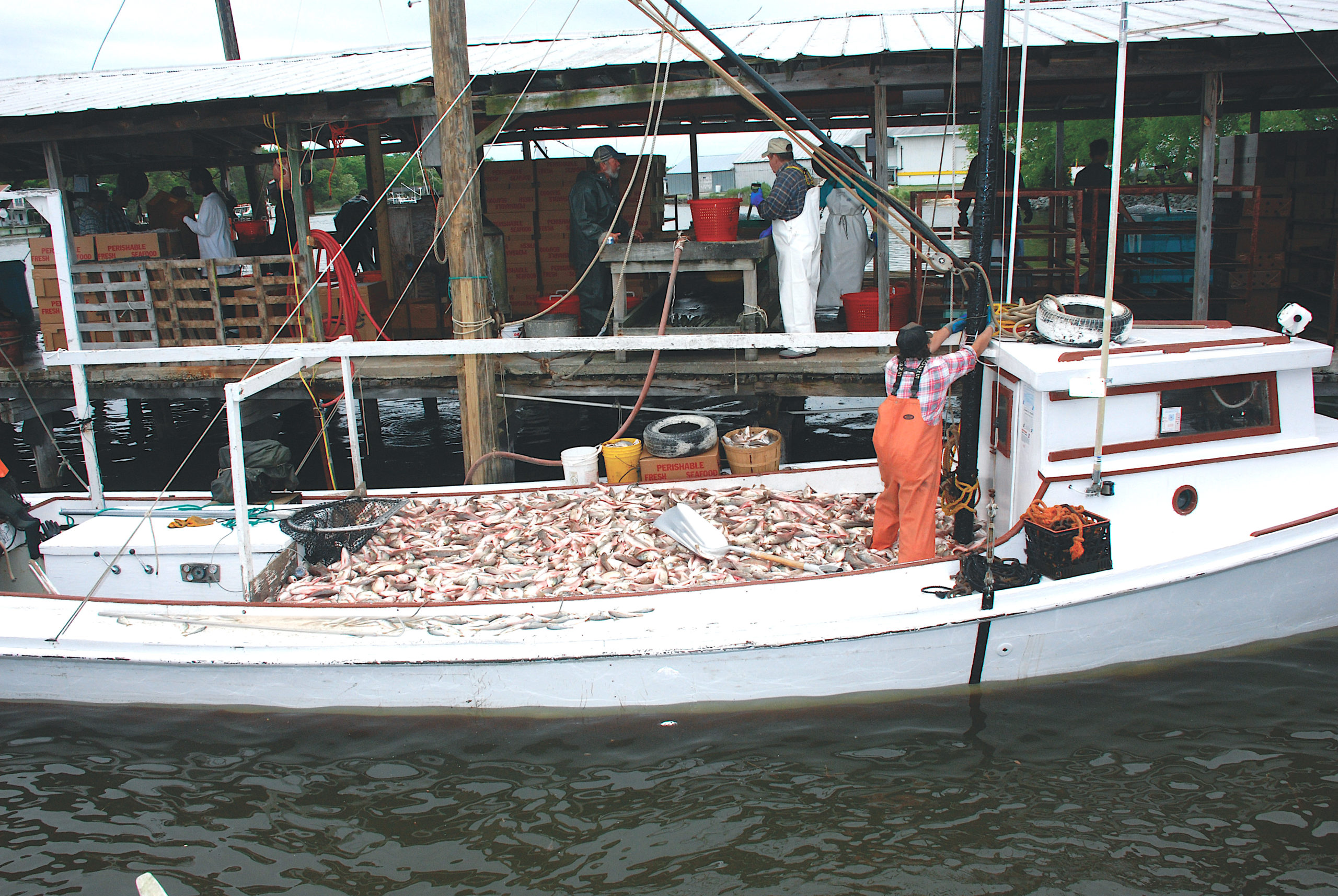The watermen of the Chesapeake experience the Bay differently than any other boater, setting out before the sun and working the water instead of playing on it. Their experiences are endlessly fascinating for Bay enthusiasts, and a recent Story Swap in St. Michaels offered an inside look at the life of watermen.
On January 11, 2024, a crowd of 100 gathered in person at the Chesapeake Bay Maritime Museum’s van Lennep Auditorium and virtually via Zoom, for a story swap featuring members of the regional waterman’s community.
The event, sponsored by the Upper Shore Regional Folklife Center, was moderated by Brent Lewis, son of an Eastern Shore waterman and the author of books about the Eastern Shore, including the award-winning Stardust by the Bushel: Hollywood on the Chesapeake Bay.
The watermen on stage were Joe Sadler, Gene Austin, Jeff Harrison, Rachel Fazenbaker, George O’Donnell, Calvert “Butterball” Thompson and Troy Wilkins. They shared stories of mentors and friends, local characters, first boats, bad weather, good catches, the future of the industry, and what it’s like to make a living on the Bay.
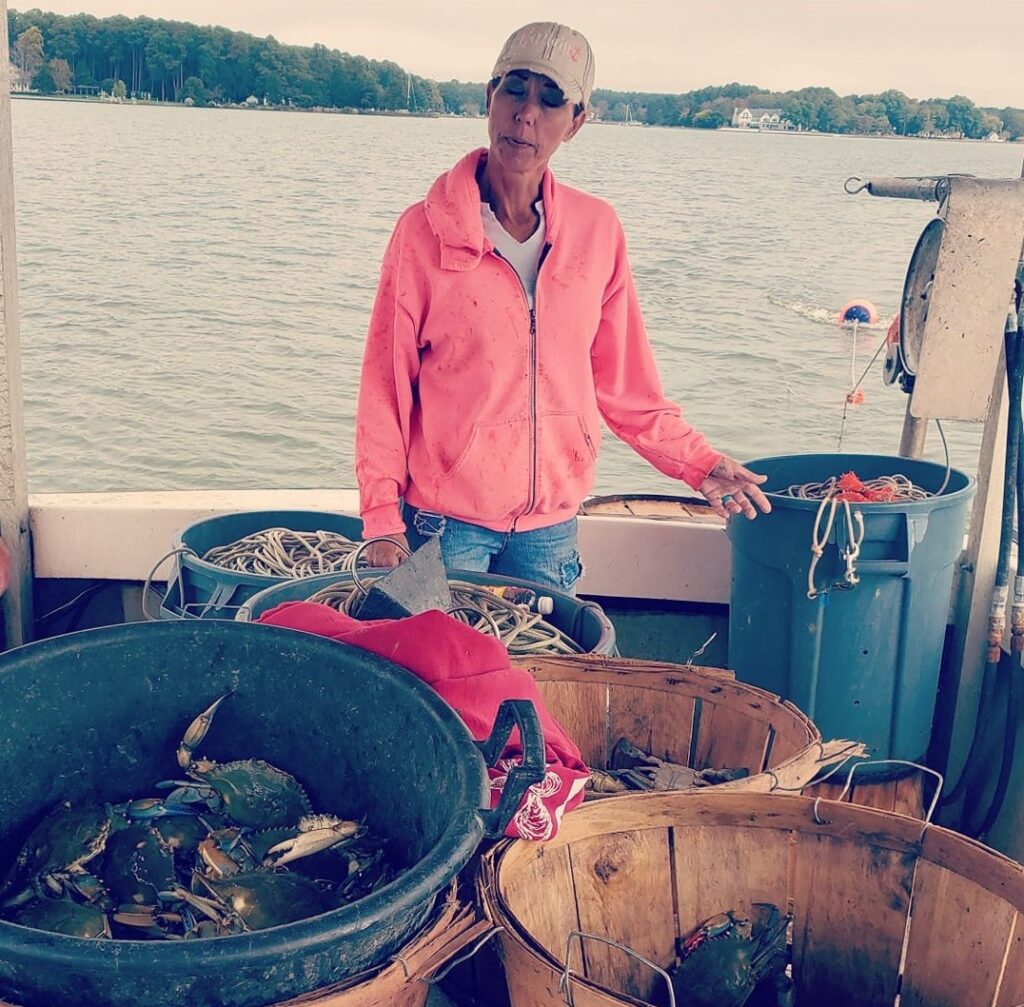
For Fazenbaker, the only woman on the panel, the term waterman suits her perfectly. “It’s not about gender—the work we do is the same for us all.”
Fazenbaker became a waterman when her husband’s friend bailed and he needed someone to go crabbing with him. After the first three sunrises, she was hooked. Now she owns her own boat, started dredging last year and is out on the water six days a week.
The men on the panel, their experience on the water began as children. George O’Donnell’s father and mentor bought him his first boat and as a 12-year-old, young O’Donnell crabbed out of Winchester Creek where his mother could keep an eye on him from the window. Joe Sadler worked on a charter boat when he was eight, only after he passed swimming lessons. He bought his first boat when he was 12 and had his father take him down to the shore to crab and oyster. Gene Austin found his first boat abandoned in the bushes, but cut grass to save up his money to buy a brand new boat from Taylor’s Island. Troy Wilkinson was 12, had his first boat at 14 and counts Butterball as his mentor. Jeff Harrison started with his grandfather on Tilghman Island, found his boat in the Montgomery Ward catalog and had it delivered to Easton.
Joe Sadler bought his first boat at 12 with earnings from what he earned working on a charter boat. Butterball’s uncle and mentor had a boat with no cabin that he described “as bad as a boat could possibly get.” No story swap would be complete without tales of the colorful characters who add to the lore of Eastern Shore life.
During any day on the water, weather can be friend or foe. From high winds to lightning strikes, deep freezes, and fire, panelists recalled their life and near death experiences with the unpredictability of nature. O’Donnell shared his tale of the deep freeze that lasted from New Year’s Eve 1976 until February 15th. After the thaw, he fell overboard in 10 degree air temperatures and 27 degree water.
“I got pulled back in and could hardly catch my breath,” he recalled. He drank all the coffee he could but still had to wait until they’d caught enough to go home.
Gene Austin’s boat caught on fire and had to be towed in by a fellow waterman on Matthews Creek. When the fire was finally out “I just started shaking,“ he remembered. “To this day, I believe in guardian angels.”
And there were memorable times. O’Donnell described being anchored on the Corsica River when Elvis Presley died and listening to his music all night. Or Butterball Thompson’s telling of the incident that paved the way for his reign as a champion anchor thrower. When his boat engine died, Thompson climbed on top of the cabin, threw the anchor as far as he could and pulled in the line to move the boat. Two and a half hours and 7 ½ miles later he was home. When a lighting strike wiped out Joe Sadler’s electronics, he was docked at Kentmorr, and able to get his charter guests off the boat.
During the question and answer period, an audience member raised the question of aquaculture. “We’ve never been against aquaculture,” Wilkinson replied. “It’s not easy, but anybody who makes a dollar on the water deserves it, and that includes aquaculture.”
O’Donnell, who worked on the water for 20 years, is now Fisheries and Boating Customer Relations Manager for the State of Maryland’s Department of National Resources. “We need somebody on the regulatory side, someone who can speak the language,” he said.
In response to how citizens can help, the panelists encouraged consumers to reject Venezuelan crab meat, support local watermen and teach children the enjoyment of seafood from the Bay.
Later in 2024 look for more oral stories that preserve and celebrate the history and culture of watermen on the Chesapeake Bay and its tributaries. There’s nothing like hearing a story from the people who live it.

